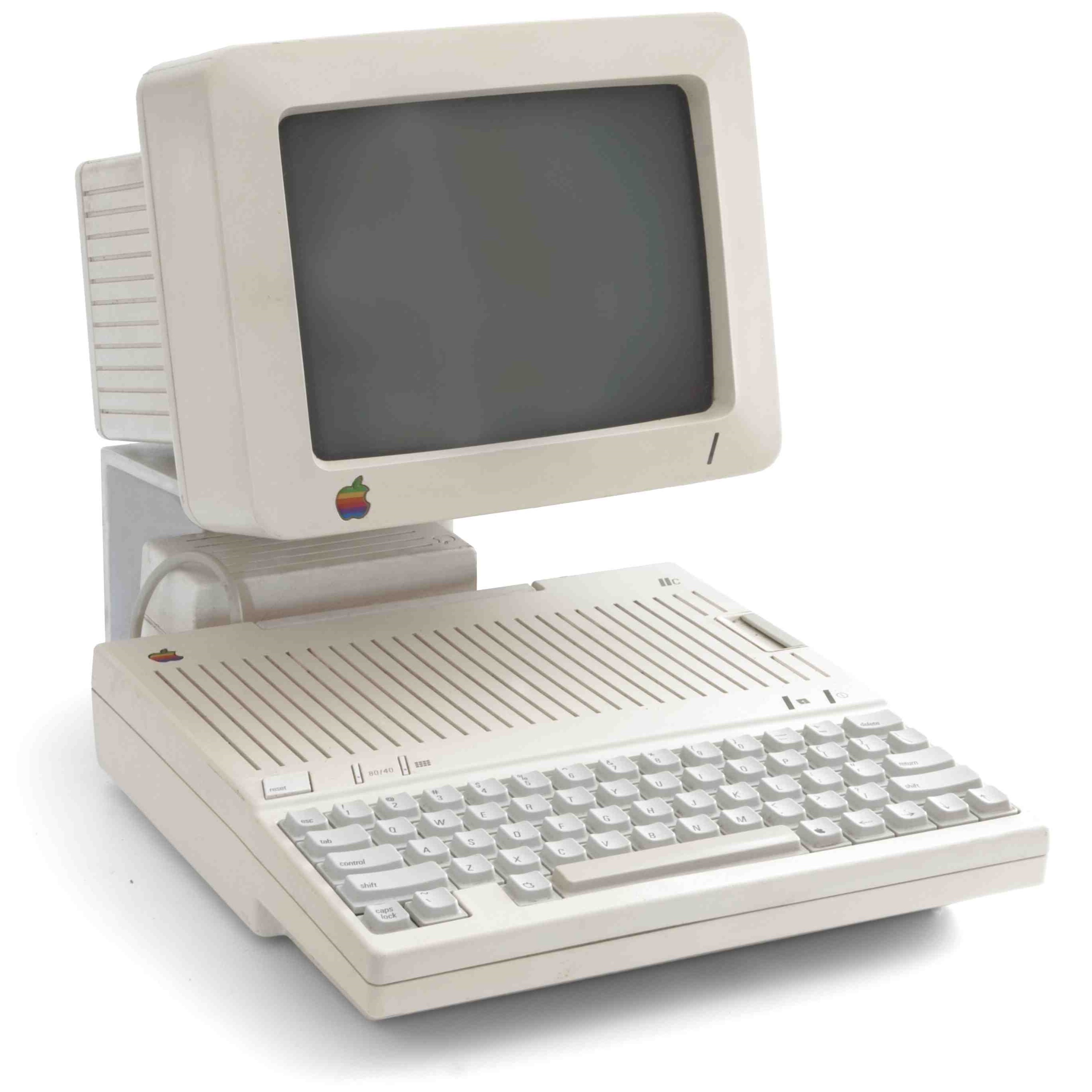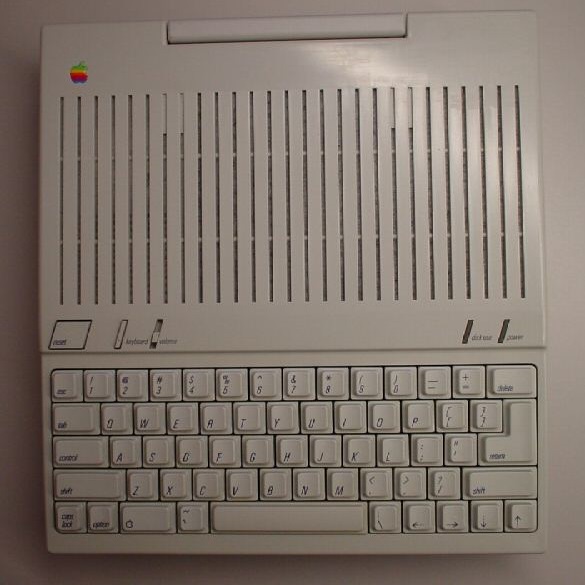Chopping the Apples
At the same time the Apple IIe and Macintosh were in the planning stages in Summer 1981, a proposal was made for a book-sized
Apple II machine. Late the next year, Steve Jobs found the possibility of such a computer very appealing when he was shown a
Toshiba portable. So, they grabbed a IIe prototype, removed the circuit board, and moved a disk drive and keyboard around the
case to find a good layout for this new machine. Jobs settled upon the keyboard being in front, the disk drive being in the
back, and the circuit board in the middle.
Baking It
Steve Jobs' philosophy for the IIc was that it be targeted at inexperienced computer users. He envisioned a "closed" computer
(wasn't expandable and all its capabilities were self-contained) with a mouse port and serial port, among other things. A IIe
engineer even added a disk controller. Then, they added a second serial port as people were bound to be using a printer and
modem. The serial ports were small so they would fit on this smaller machine.
The prototype IIc has shorter ventholes than the final unit, and a couple were added through the disk latch. None of the buttons
or LEDs above the keyboard have their labels yet. The keys themselves were slightly taller with the plastic being raised higher
over the base plastic. A small square indent right under where the final's Apple logo would go was filled in.

Apple Pie is Served
The Apple IIc was released on April 24, 1984 not as a successor, but rather a portable version of the IIe at an event called
Apple II Forever. That name made clear how much Apple was committed to serving its Apple II users for a long time (how long the
line lasted seemed like "forever" too). The IIc was considered a response to IBM's PCjr even though Apple just released the
Macintosh three months prior. This new Apple II model was the first to use the company's "Snow White" design language that became
customary throughout the 1980s and 1990s. It's casing was smaller, and more compact (hence the "c") than earlier models. A 5
1/4" disk drive was built into the right side. Five features that were on expansion cards for the IIe were built straight into
the IIc: An Extended 80 column card, two Apple Super Serial Cards, a Mouse Card, and floppy drive controller card. The back of
the machine had a handle on it, so you could carry it around, or prop up the machine to make typing more comfortable.

This computer turned out to be the last in the Apple II line. During development, it was rumored to have no expansion slots.
John Arkley, an engineer of the IIc Plus project, had a plan to redesign the IIgs motherboard to fit into a IIc case. He
petitioned for the project to continue but it was rejected. The original plan was to use a 3 1/2" drive instead of a 5 1/4"
drive, keeping the IIc design the same. In 1986, a third-party Apple IIc-compatible machine called the Laser 128 came out, and
is said to have influenced the IIc Plus. Its full backwards-compatibility allowed it to replace the original IIc.


The only difference the prototype has from the final unit I can find is the lack of the "Apple IIc Plus" logo in the corner.





 The only difference the prototype has from the final unit I can find is the lack of the "Apple IIc Plus" logo in the corner.
The only difference the prototype has from the final unit I can find is the lack of the "Apple IIc Plus" logo in the corner.